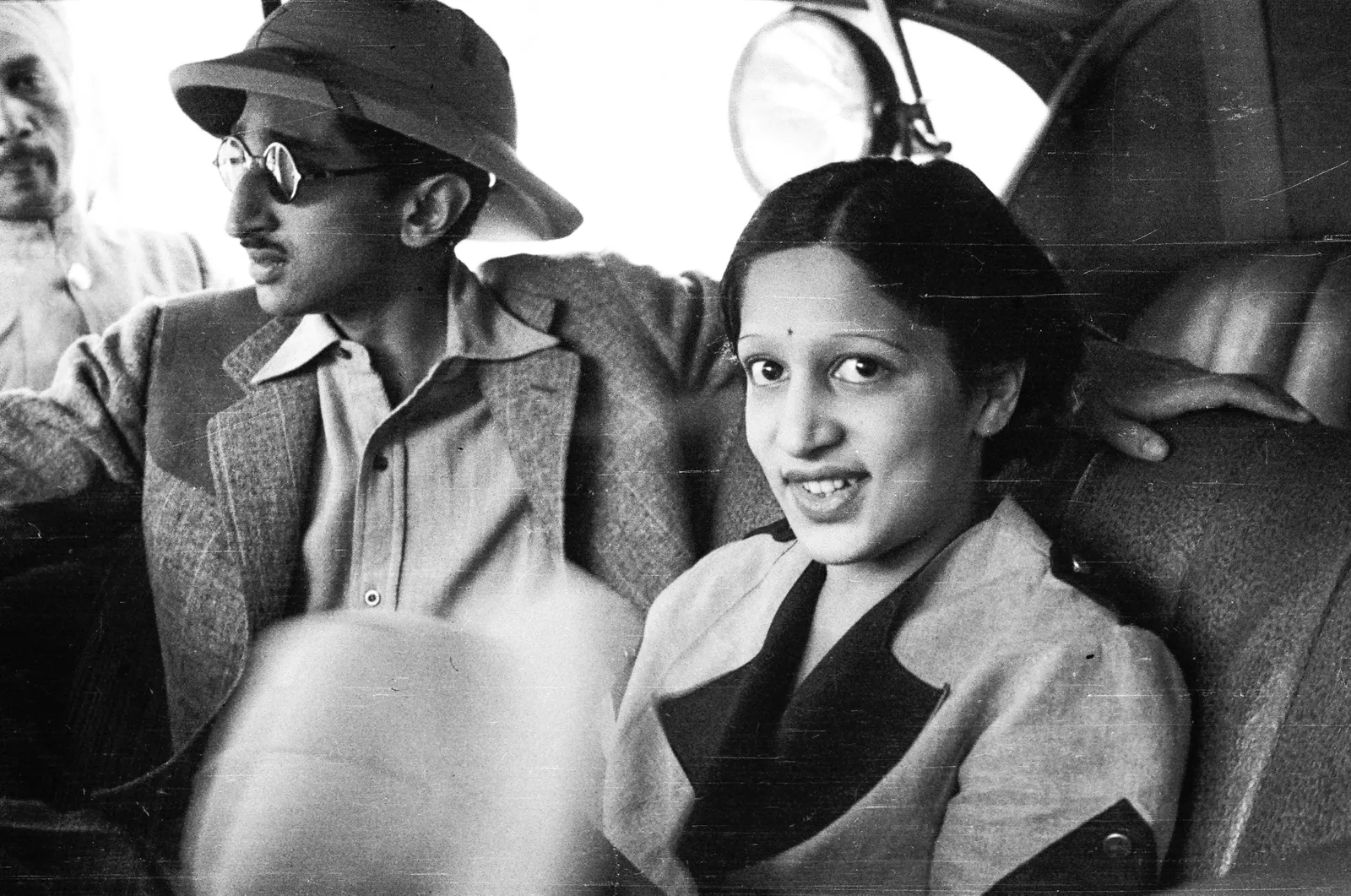The Maharaja And Maharani Of The Côte d’Azur

The 1920s were a time of glamour, opulence, and indulgence, and nowhere was this more evident than on the French Riviera, the luxurious playground of the European elite. Among the international jet set of the era, the Maharaja and Maharani of Indore stood out as one of the most captivating and extravagant couples. Their life on the Côte d’Azur was the stuff of legend, filled with lavish parties, remarkable friendships, and a commitment to pushing the boundaries of extravagance.
Let's explore the fascinating world of the Maharaja and Maharani of Indore in the 1920s and the unique company they kept.

The Maharaja and Maharani of Indore
Yashwant Rao Holkar II, the Maharaja of Indore, and his wife, Maharani Sanyogita Devi, were among the most notable Indian royals of their time. They were known for their exquisite taste and extravagant lifestyle. The Maharaja was a visionary leader, responsible for many modernisation efforts in Indore, while the Maharani was celebrated for her impeccable style and beauty.

Their contemporary sense of design, spanning from residences to furniture and jewellery (the Maharaja was a renowned figure in the world of design), coupled with their extensive and all-consuming cosmopolitan journeys (their presence in India was rare), reflect a couple who embodied not only beauty, talent, and a taste for adventure but also a forward-thinking attitude. They weren't content with simply chasing excitement; they actively sought to create it.

As a couple, they exuded enviable elegance. Individually, they were equally breathtaking. He possessed a distinguished presence—tall and slender, donning meticulously tailored designer suits and sporting a fashionably slender mustache. She epitomized tasteful glamour, embracing the 1920s aesthetic with era-appropriate silhouettes, those characteristic twenties eyebrows, a flapper's hairstyle, luxurious furs, and the world's most flawless diamonds. Photographers like Man Ray tirelessly trailed them, forever capturing their glamour and opulence through his iconic lens. Artists like Bernard Boutet de Monvel crafted dreamlike portraits of the couple. Yet, despite their undeniable modernist appeal, these Maharajas of the contemporary age remain relatively obscure to many.
They had unfettered access to Hollywood stars like Gary Cooper, Cecile B DeMille and Gail Patrick, who welcomed them backstage and called them friends. For a few years during the Jazz Age, the world was their oyster, a playground, from Cannes to Hollywood, they feverishly explored and drew much creative inspiration from.

Extravagant Lifestyle on the Côte d’Azur
The Maharaja and Maharani of Indore were frequent visitors to the French Riviera during the 1920s, where they lived a life of unparalleled luxury. They owned several grand villas along the coast, including the magnificent Villa Shiv Niwas, known for its opulent décor and magnificent gardens. The couple spared no expense in furnishing their residences, hiring renowned designers and artists to create lavish interiors.
The Maharani was a fashion icon of her time, and her wardrobe was nothing short of legendary. She commissioned the finest European designers to create bespoke couture for her, and her fashion choices were closely followed by fashionistas worldwide. She was particularly fond of jewellery, and her collection of exquisite gemstones was the envy of royals and socialites alike.

Extravagant Parties and Unique Company
The Maharaja and Maharani were renowned for their extravagant soirées, where they hosted a diverse and intriguing group of guests. Their guest list included European aristocracy, Hollywood stars, and famous artists and writers of the time. The allure of their parties was not only the opulent settings and fine cuisine but also the creative atmosphere that fostered groundbreaking conversations.
Among their closest friends was the legendary dancer and actress Josephine Baker, who often performed at their events. The Maharaja's passion for art led to his friendships with luminaries like Pablo Picasso, Salvador Dalí and Man Ray, who created artworks inspired by their time together. The couple's gatherings on the Côte d’Azur became a hub for cultural exchange and artistic collaboration.

Man Ray mused over the striking couple;
“The Maharaja of Indore came to the studio [in Paris] to be photographed, also in Western clothes – sack suits and formal evening dress. He was young, tall and very elegant. I got a substantial order from this sitting. […] Next year, the Maharaja was in the South of France with his young bride. He had taken an entire floor of a hotel in Cannes for himself and his retinue. I arrived in Cannes before noon, was assigned to my room in the suite […] The Maharanee was an exquisite girl in her teens. She wore French clothes, and a huge emerald ring. The Maharaja had bought it for her that morning while taking a walk. […] The next day I was asked to bring my camera to their suite […] to make a series of photographs that would be a record of their honeymoon. First, I had to play some jazz to which the subjects danced, and then they sat down holding hands. I made a few exposures, after which I suggested that they pose separately for individual portraits.”
More from Man Ray
Legacy and Influence
The Maharaja and Maharani of Indore's life on the Côte d’Azur left an indelible mark on the social, cultural, and artistic landscape of the 1920s. Their extravagant lifestyle, unique company, and contributions to the arts continue to be celebrated to this day. Their legacy lives on through their impact on the world of fashion, art, and society.

The life of the Maharaja and Maharani of Indore in the 1920s on the Côte d’Azur was a dazzling display of wealth, creativity, and audacity. They embraced the spirit of the Roaring Twenties and left an enduring mark on the cultural and artistic world through their unique company, extravagant parties, and unmatched taste. Their legacy serves as a reminder of an era when opulence and creativity coexisted in an intoxicating whirlwind of extravagance on the French Riviera.
The Maharani Sanyogita died at the tender age of twenty-two. (It's been very difficult to gather any information on her life and death. I read that she was in Switzerland for a "cure" - whether just a rest cure or for something more serious, I don't know - and that she suddenly became ill and was operated on for a ruptured appendix, but died during the operation; I've found nothing else to corroborate any of this. She left behind her four year old daughter, and her husband, not even thirty, was devastated.
Portraits by Boutet de Monvel, 1929.
The Maharaja married twice more, both times to American divorcées. He had a son with his third wife, whom he had married in 1943, but because of the irregularity of this marriage, his titles eventually passed to his daughter from his first marriage.
After the independence of India, Indore was combined with twenty-four other princely states to form the new state of Madhya Bharat, where the Maharaja served as senior Up-Rajpramukh (second in command to the governor) until 1956, when the Indian states were again reorganised. He then worked for the United Nations. He died in a hospital in Bombay (Mumbai) at the age of fifty-three.









